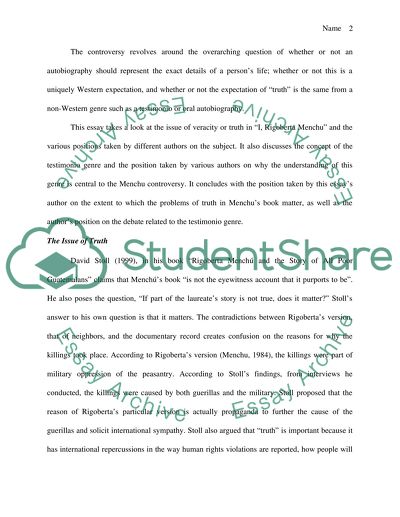Cite this document
(“Truth in Autobiography: The Rigoberta Mench Controversy Term Paper”, n.d.)
Truth in Autobiography: The Rigoberta Mench Controversy Term Paper. Retrieved from https://studentshare.org/literature/1507718-rigoberta-menchu-controversy-synthesis-essay
Truth in Autobiography: The Rigoberta Mench Controversy Term Paper. Retrieved from https://studentshare.org/literature/1507718-rigoberta-menchu-controversy-synthesis-essay
(Truth in Autobiography: The Rigoberta Mench Controversy Term Paper)
Truth in Autobiography: The Rigoberta Mench Controversy Term Paper. https://studentshare.org/literature/1507718-rigoberta-menchu-controversy-synthesis-essay.
Truth in Autobiography: The Rigoberta Mench Controversy Term Paper. https://studentshare.org/literature/1507718-rigoberta-menchu-controversy-synthesis-essay.
“Truth in Autobiography: The Rigoberta Mench Controversy Term Paper”, n.d. https://studentshare.org/literature/1507718-rigoberta-menchu-controversy-synthesis-essay.


